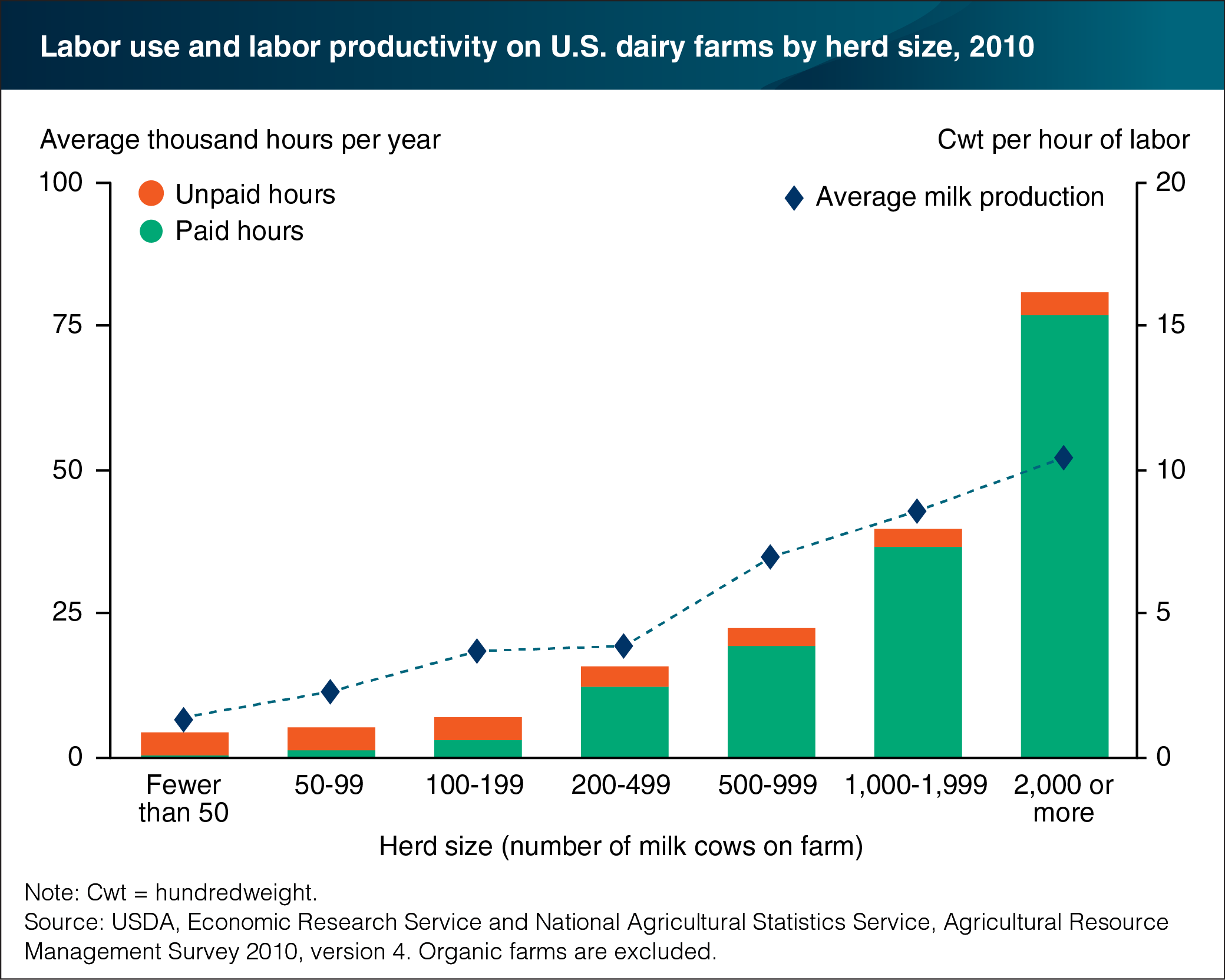Labor productivity is higher on larger U.S. dairy farms than on smaller farms
- by James M. MacDonald
- 6/10/2016

Most labor on small U.S. dairy farms is provided by the operator and the operator’s family, whereas large dairy farms, while usually still family-owned and operated, rely extensively on hired labor. Labor productivity—output of milk per hour of labor—is much higher on larger dairy farms, with the largest (farms with milking herds of at least 2,000 cows) realizing 10 hundredweight (cwt) per hour of labor, compared to 2-4 cwt per hour on farms with herds of 50-500 head. Large farms operate differently than small dairy farms, as their size allows them to apply practices and technologies that result in higher milk yields and labor productivity. For example, farms with at least 500 cows are much more likely to milk three times a day, while smaller farms typically milk twice a day. Thrice-daily milking raises per-cow milk yields, allows farms to offer more work and higher pay to their hired labor, and creates more intensive use of milking equipment. Greater labor productivity is one source of the cost advantages accruing to larger dairy operations. This chart is based on data found in the ERS report, Changing Structure, Financial Risks, and Government Policy for the U.S. Dairy Industry, March 2016.

